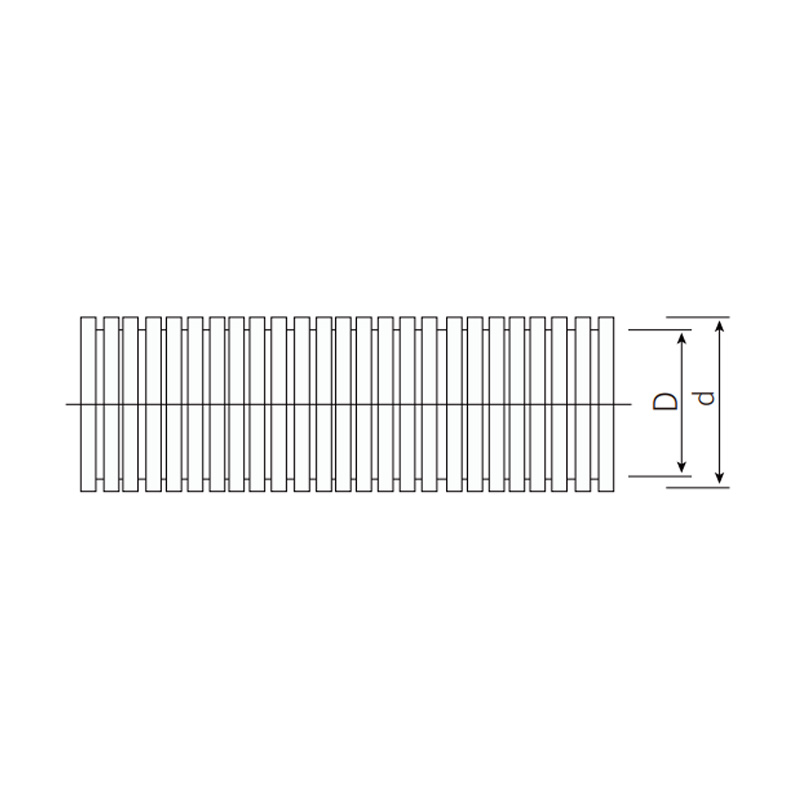Understanding and selecting the correct IP rating is essential when choosing a Waterproof Junction Box or Waterproof Distribution Box. It ensures safety, reliability, and long-term...
READ MORE-
-
Outdoor electrical installations face unique challenges that require specialized components to ensure their reliability and safety. Among the more important components are metal ca...
READ MORE -
Durability is a key factor when designing and maintaining electrical systems. With so many environmental challenges that electrical installations face—such as excessive temperature...
READ MORE -
Safety compliance is not just about adhering to regulations; it’s about protecting people, equipment, and infrastructure from the risks of electrical hazards. Electrical fires, sho...
READ MORE
Industry Knowledge Extension
What Are the Three Types of Plastic Bellows?
Plastic bellows are flexible, corrugated tubes widely used to protect mechanical components, electrical wiring, and hydraulic or pneumatic systems. They are designed to allow movement while shielding internal elements from dust, debris, moisture, and mechanical wear. There are three main types of plastic bellows:
1. Accordion Bellows
Accordion bellows have a series of alternating folds that expand and contract like an accordion. This design allows high flexibility and compression and extension capabilities. They are commonly used in robotics, industrial machinery, and automotive applications where precise motion and repeated flexing occur. The accordion structure ensures that the protected components are shielded from dirt, liquids, and mechanical damage while maintaining unrestricted movement. These bellows are often made from materials such as PVC, polyurethane, or polypropylene, offering a balance between flexibility, durability, and resistance to environmental factors.
2. Convoluted Bellows
Convoluted bellows feature uniform ridges along their length, providing enhanced structural stability while allowing bending and twisting. They are used in applications that require moderate flexibility with added mechanical support. The convoluted design distributes stress evenly, reducing wear and prolonging the lifespan of the protected cables or shafts. Polyamide and polyethylene are commonly used for convoluted bellows due to their chemical resistance and durability. These bellows are ideal for cable management, hydraulic lines, and automotive hoses where protection from abrasion and contaminants is critical.
3. Spiral Bellows
Spiral bellows are constructed with a helical pattern, allowing them to expand and rotate freely around a central axis. This type is particularly suitable for applications requiring torsional flexibility, such as robotic arms, rotating machinery, and flexible conduits in constrained spaces. Spiral bellows provide continuous protection while accommodating complex motion paths. Materials like polyurethane and thermoplastic elastomers are commonly used for spiral bellows, offering resilience, chemical resistance, and durability under repetitive stress.
Each type of plastic bellows serves a specific function depending on the motion requirements, environmental conditions, and mechanical protection needed, making them versatile solutions for industrial and automotive applications.
What Is the Main Function of Convoluted Protection Tubing?
Convoluted protection tubing is widely used to shield cables and wires in various applications. Its design combines flexibility with durability, providing reliable protection under challenging conditions. Its main functions can be summarized in three points:
- Function: Cable Protection
The primary function of convoluted protection tubing is to protect electrical wires and cables from mechanical damage. The corrugated design absorbs impacts, prevents abrasion, and shields wires from sharp edges or moving components. This protection reduces the risk of electrical failures caused by insulation damage and ensures long-term system reliability.
- Function: Environmental Resistance
Convoluted tubing provides a barrier against moisture, dust, oil, and chemicals. In automotive, industrial, and outdoor applications, wires are exposed to harsh environments that can degrade insulation. Convoluted tubing resists water ingress, oil splashes, and dirt accumulation, maintaining the integrity of electrical connections over time.
- Function: Flexibility and Organization
The tubing allows wires to bend, twist, and move without kinking or breaking. It helps organize multiple wires into a single pathway, improving installation efficiency and reducing clutter. This flexibility is especially important in tight spaces, such as engine compartments or machinery, where wires must follow complex paths while remaining protected.
By combining protection, environmental resistance, and flexible organization, convoluted protection tubing ensures safe, reliable, and long-lasting operation of electrical systems.
How to Choose the Right Split Tubing for Wire Loom Electrical Applications?
Selecting the appropriate split tubing is crucial for effective wire protection. Consider the following factors:
Material: ABS, PVC, or Polyamide – Choose a material based on environmental conditions. ABS offers impact resistance, PVC provides chemical resistance and cost-effectiveness, and polyamide ensures high durability and temperature resistance.
Diameter: Fit to Cable Bundle – Select a tubing diameter slightly larger than the cable bundle to avoid tight squeezing, which can cause heat buildup or damage insulation. Proper sizing ensures flexibility and allows for easier cable insertion.
Wall Thickness: Durability and Flexibility – Thicker walls provide better protection against abrasion and mechanical stress, while thinner walls improve flexibility. Balance is key depending on the application environment.
Temperature Range: Operating Environment – Consider the and temperatures the tubing will encounter. High-temperature-resistant materials are necessary for automotive or industrial machinery, whereas standard PVC or ABS is sufficient for indoor wiring.
UV and Chemical Resistance: Outdoor Use – For outdoor applications, choose tubing with UV stabilization and resistance to oils, fuels, and other chemicals to prevent premature degradation.


 English
English 中文简体
中文简体 Español
Español عربى
عربى











